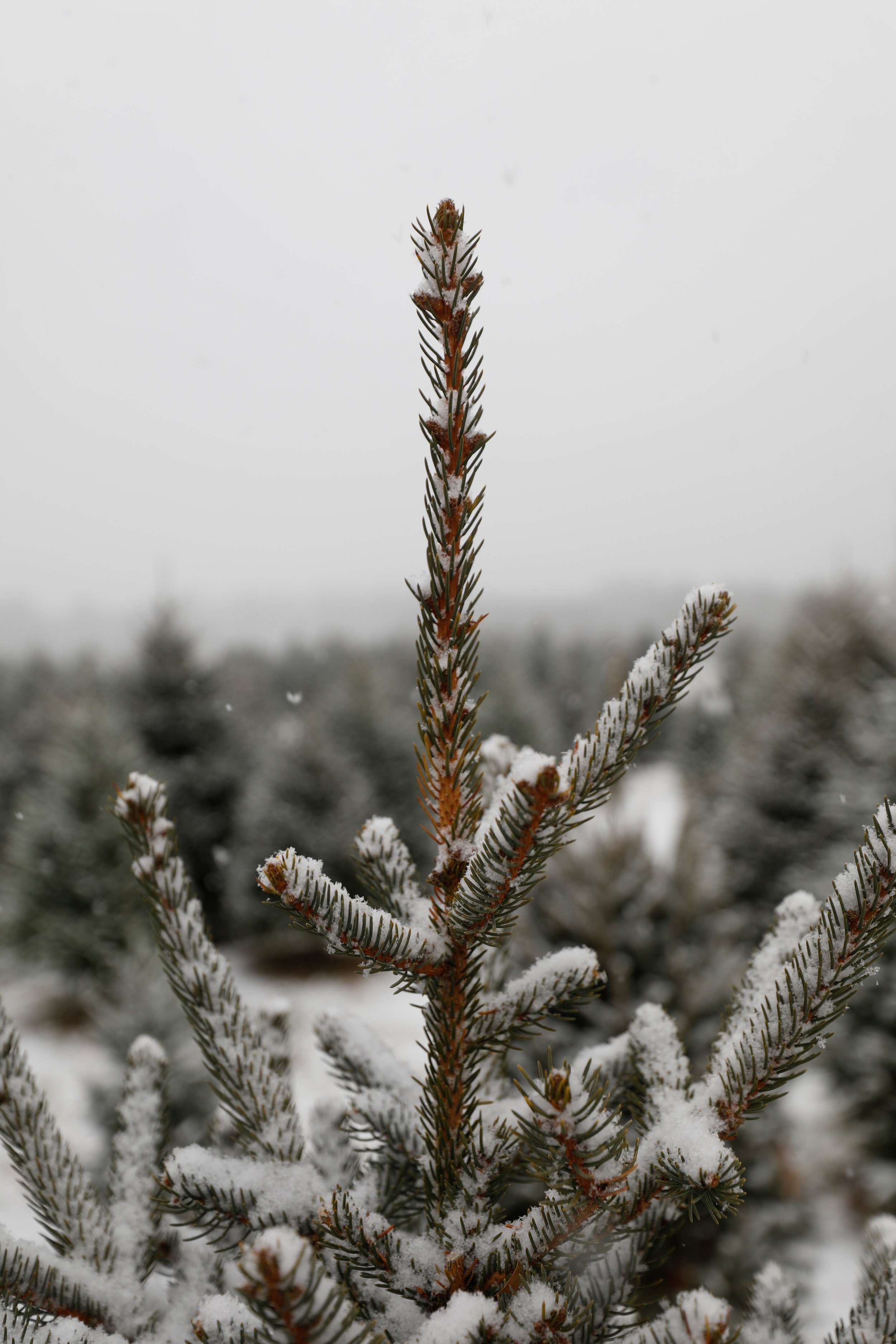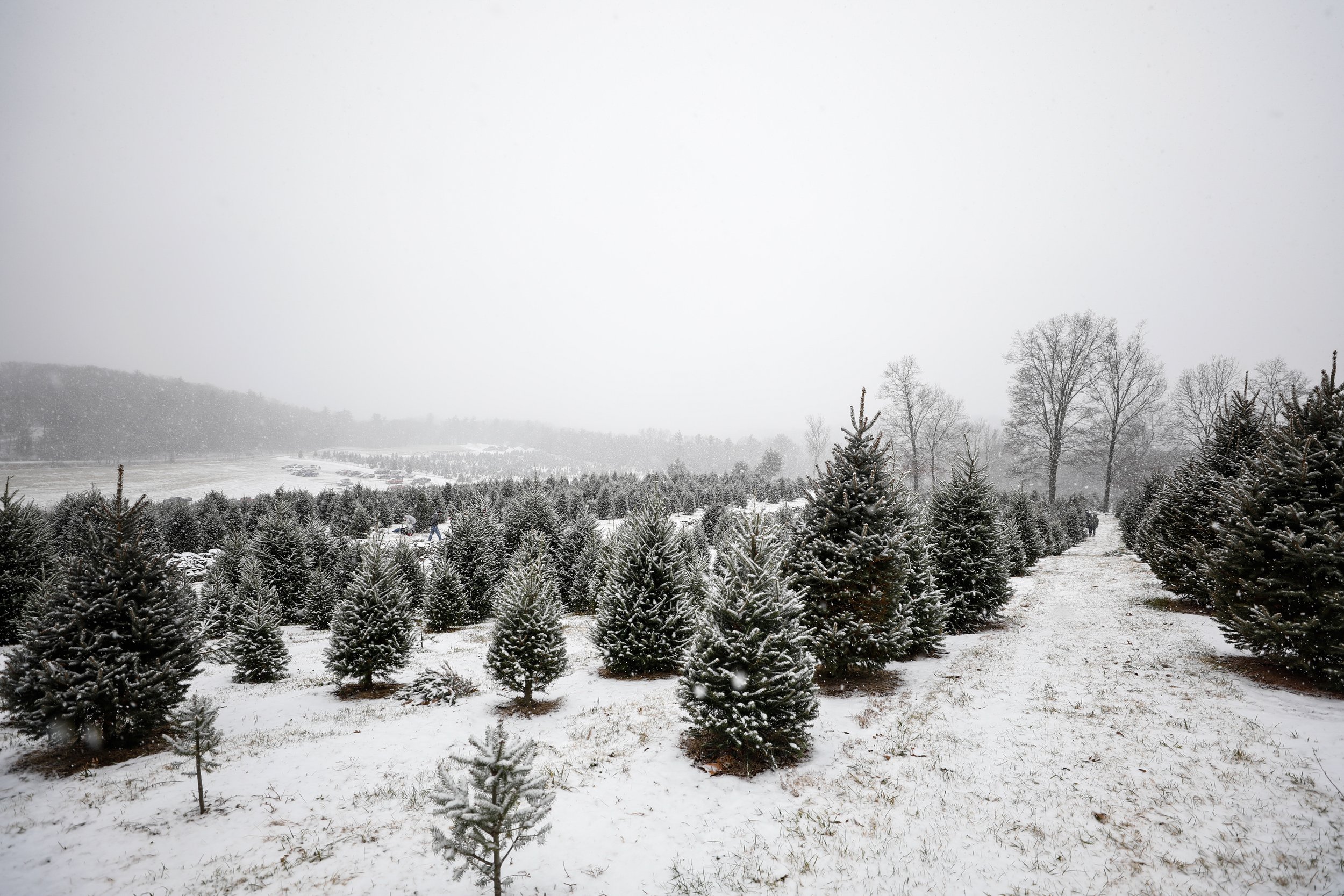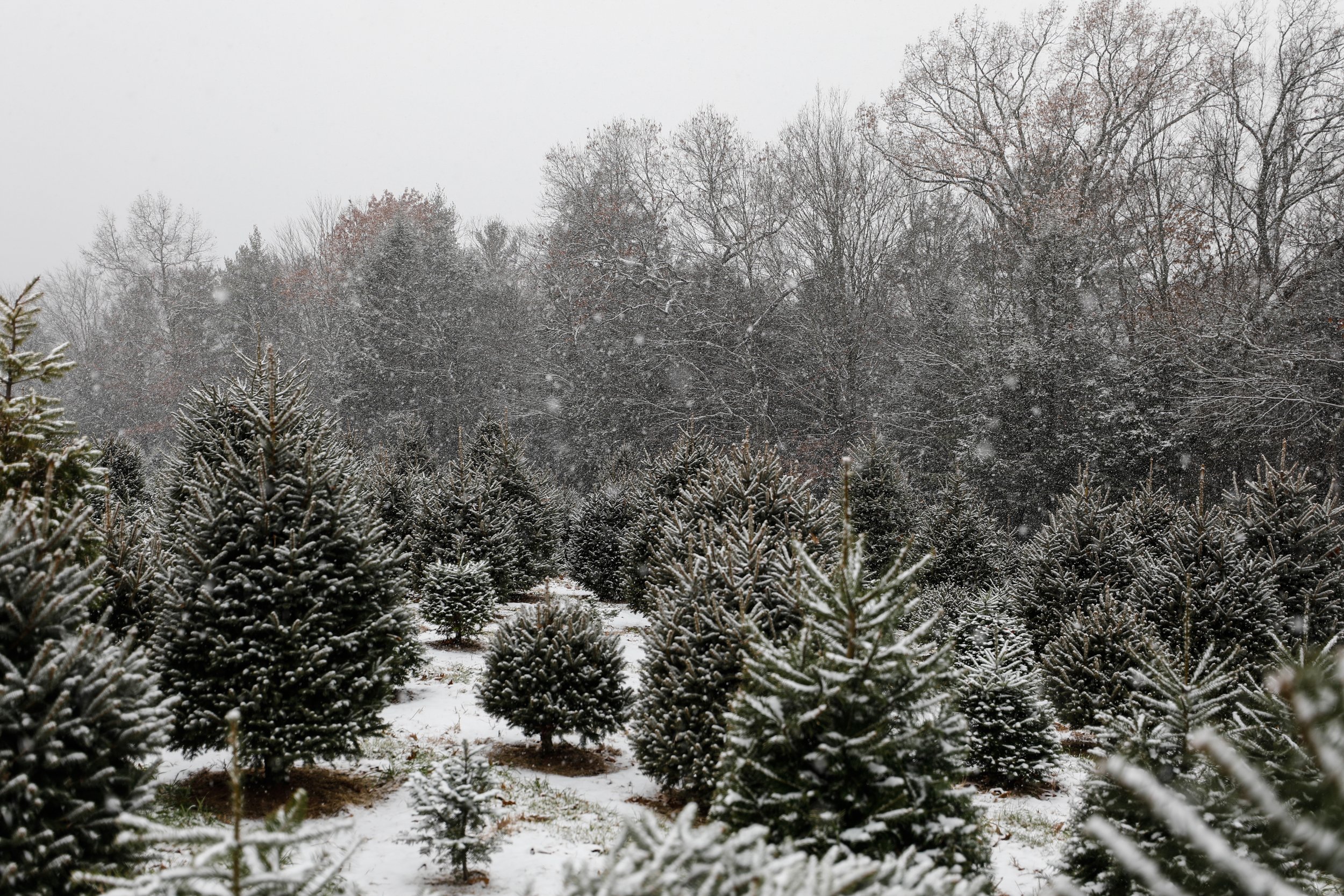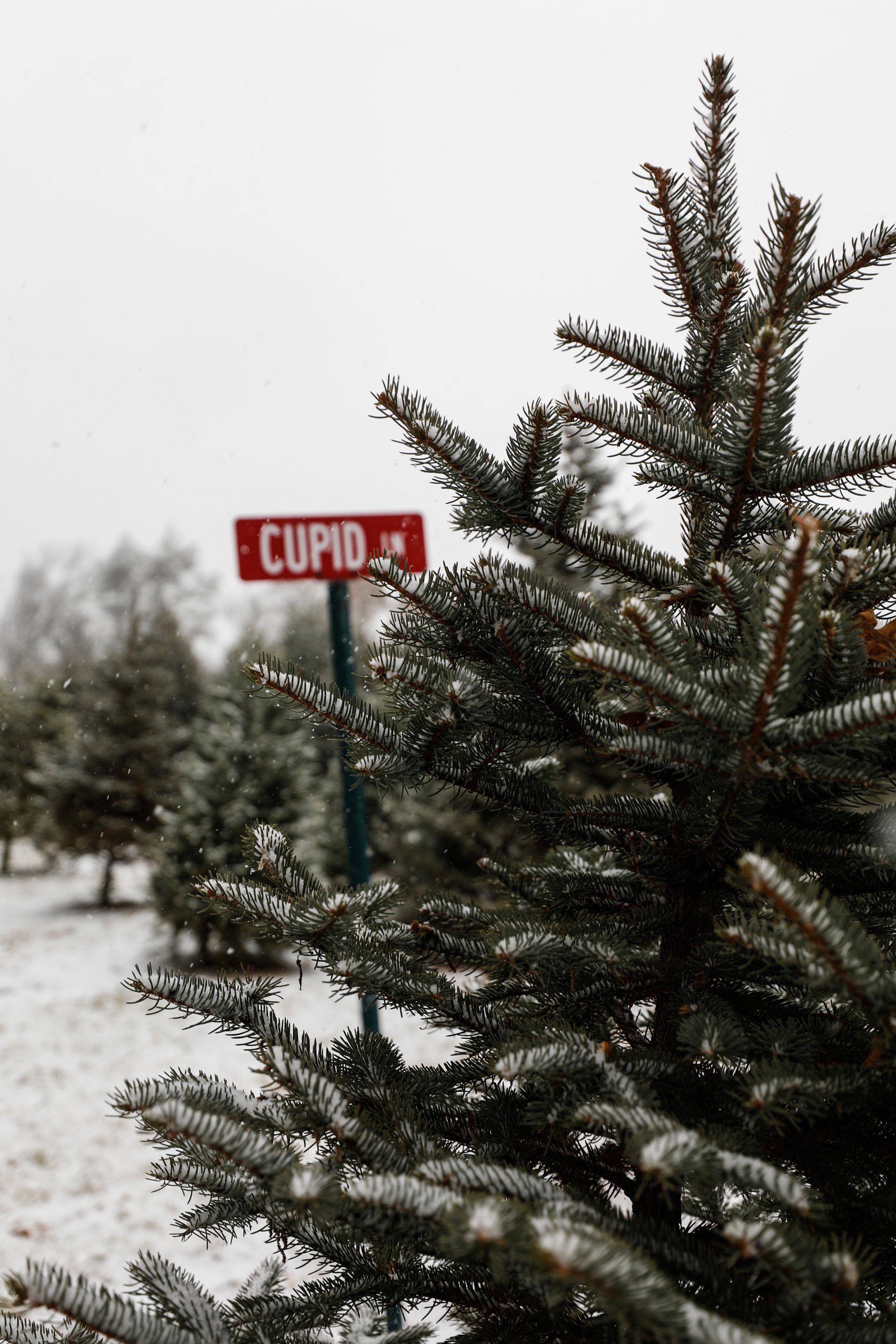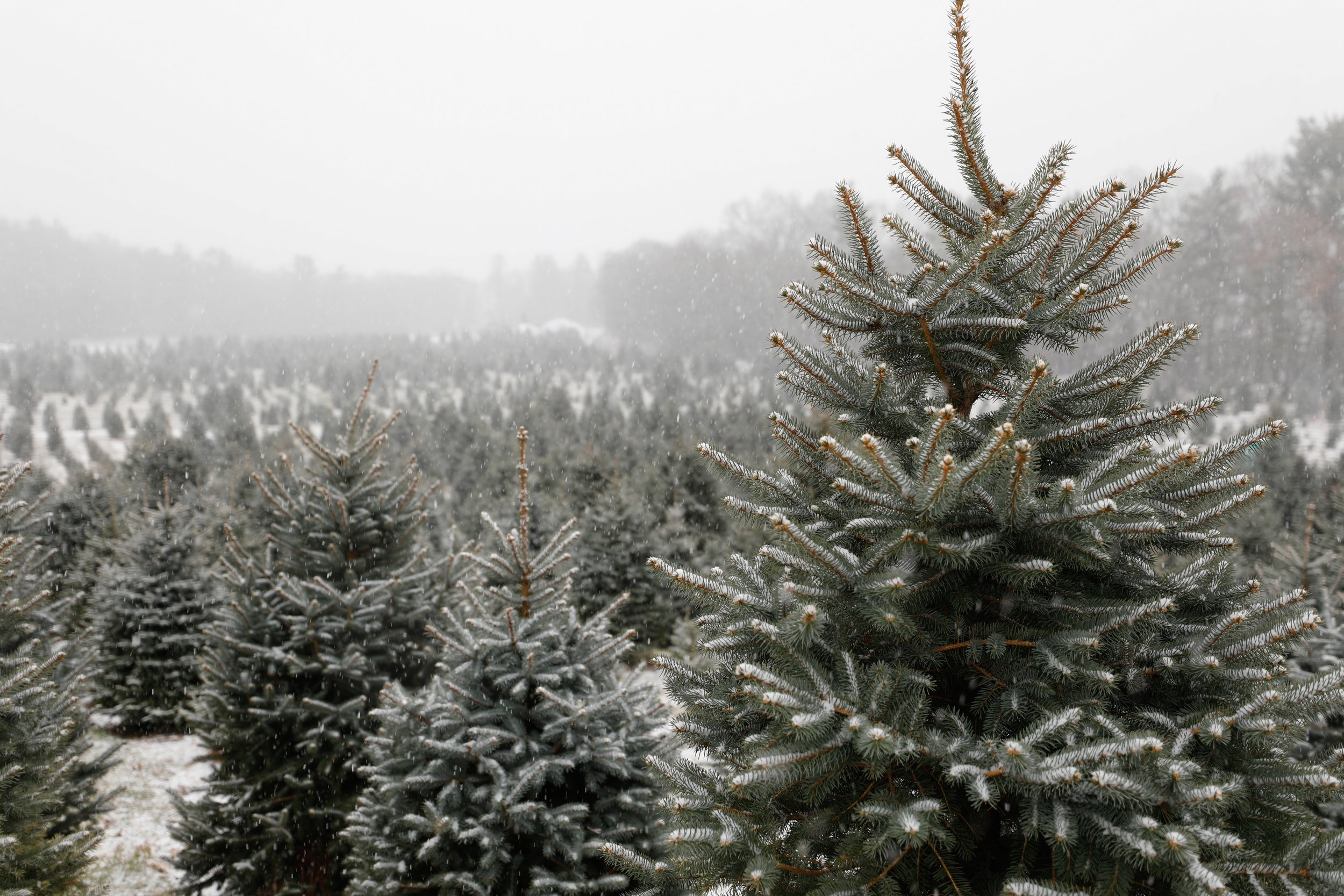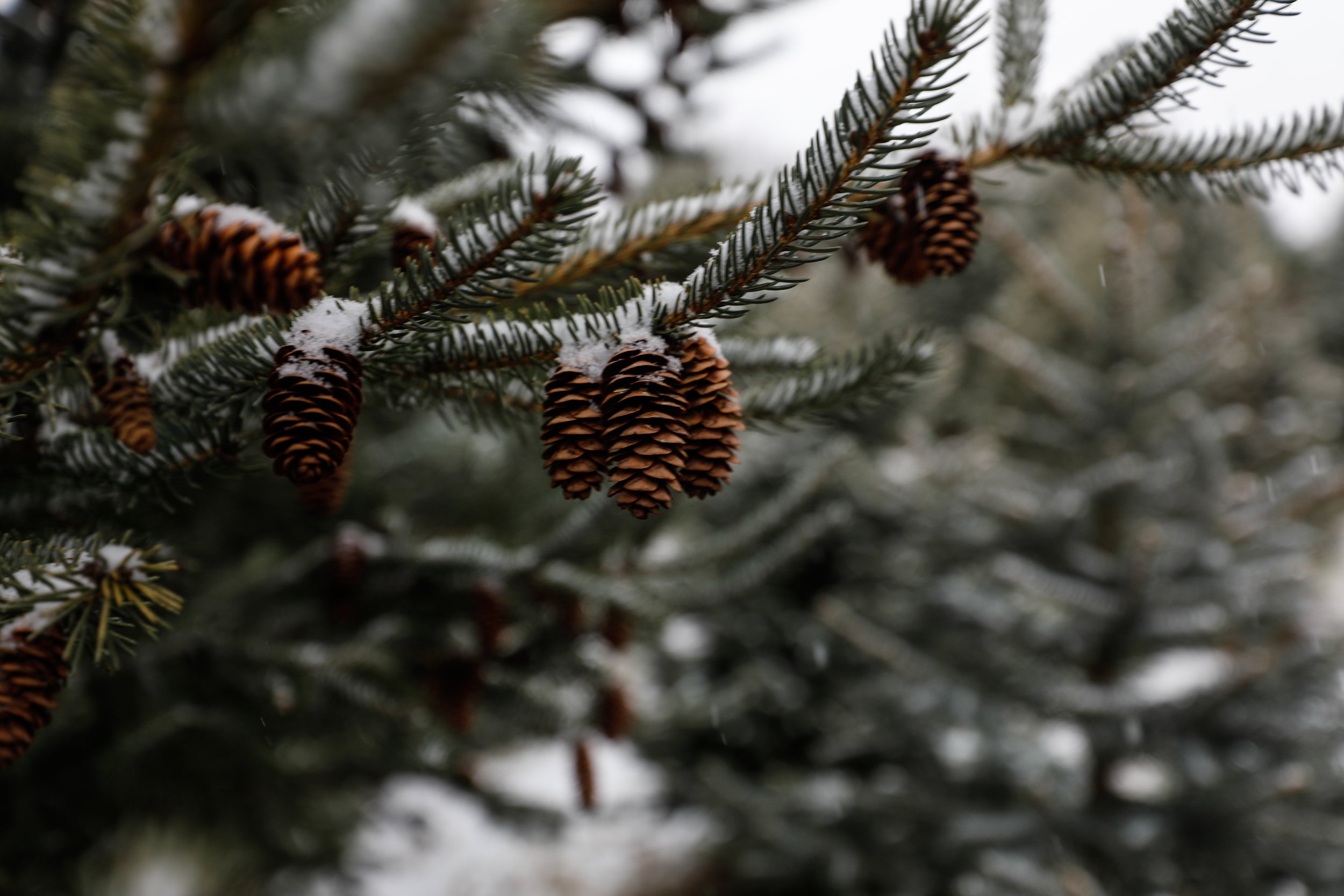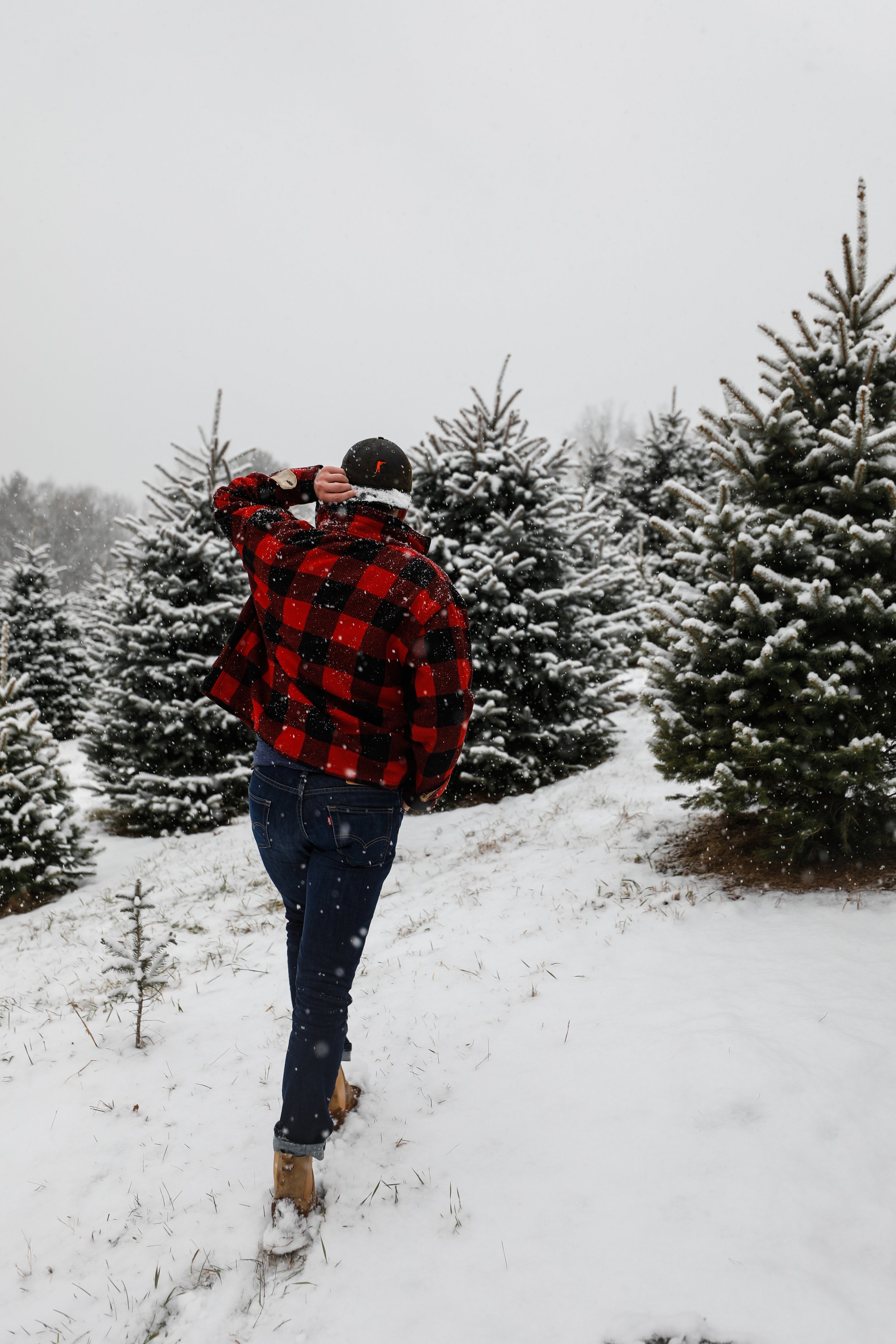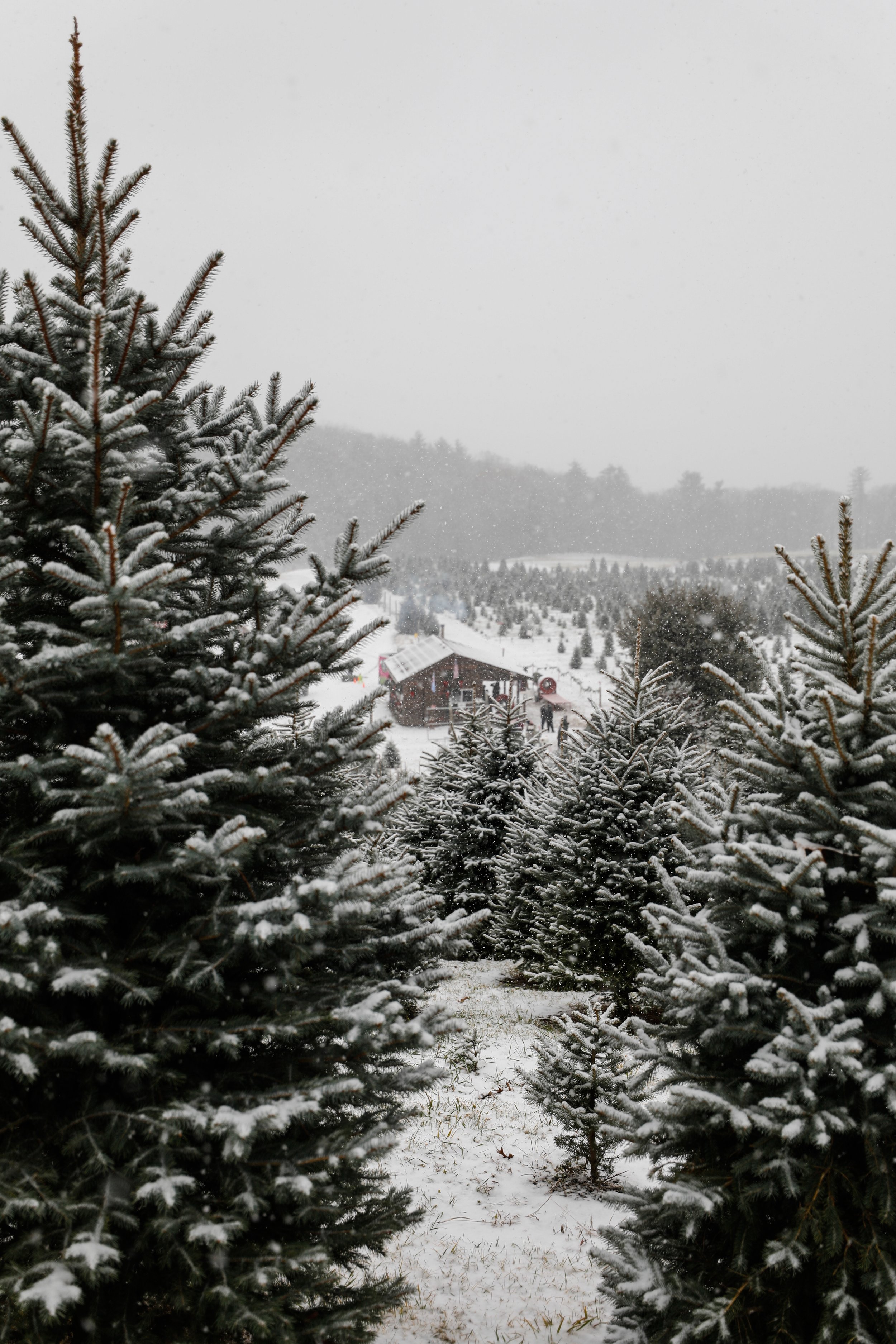O Christmas Tree
Ben Ashby
A lifetime of plastic-fake Christmas trees makes way for the annual Christmas tree cutting trip.
IN KENTUCKY, YOU DON’T REALLY HAVE THE LUXURY OF FRESH CHRISTMAS TREES. The stories I’ve heard about people going out to the old mine lands and cutting a cedar tree truly confuse me. Every cedar tree I’ve ever known has bent and bowed with the addition of even the lightest ornament or light. I’ve also learned that pine trees, while pretty, aren’t particularly shaped to be a Christmas tree. Beyond those two imperfect choices, you are pretty much left with “fake” down here in the Bluegrass State. Today, the options for fake trees are endless, but twenty years ago, the stereotypical cone-shaped green fake tree was all that could be found.
I believe there is a real science to fake Christmas tree development. Right now, as you read this, there is someone in a lab (yes, a literal laboratory) creating more advanced fake Christmas tree varieties and technologies. In some small way, those people will change the world. However, on countless farms across the country at this very minute families are celebrating the time-honored tradition of cutting their family Christmas trees. In a world where chocolate and vanilla soft serve can swirl out of the same machine, I believe we have a place for both fake and real Christmas trees. This year I have already put up ten fake trees, and before it is over there will be at least one real one in the mix.
I grew up in the 90s with strictly the fake variety of Christmas tree, for the reasons explained above. In Kentucky, we simply didn’t have fresh tree farms, and even the Boy Scouts quit selling them down in front of the grocery stores sometime around 2000. Ours was a Walmart special bought in 1994 at the Walmart that is now a Mexican restaurant in town. It claims to be a six-foot tree, according to its box, but you and I both know it is a five-foot tree at the very most. That extra foot of alleged height only comes into play if you stretch, pull, and fluff that long branch on the very top like Alfalfa’s hair in The Little Rascals. That tree is currently displayed next to a bright green velvet sectional in my backroom. It is looking rough after twenty-five years, but is still going strong.
There is one place in our town that does sell live Christmas trees, but they truck them in from Alabama, which feels weird to me. I’ve only ever bought one tree from there, but I do highly recommend their fruit baskets. However, each year I do buy a live tree, be it at a random tree farm out in the country or somewhere in the Catskills. I wouldn’t say I am a Christmas tree expert by any means, but I have learned a few things over the years.
My first lesson, and one I still don’t fully understand the logic of, was the lesson I learned the year I cut down a tree for a photoshoot, but forgot that I had to actually buy it. Somewhere it escaped me that I had to take the tree home with me until it was being stuffed into my car for the forthcoming two-hour drive. I’m not sure whatever happened to that tree. I think we ended up keeping it until June to use for crafts. I guess the moral of the story is, make sure you have the right vehicle to transport your tree home, and a place to put it once you get there.
Another lesson was: just don’t buy a blue spruce. One year before I knew better, I was really specific that I wanted a tree that looked like it belonged in Martha Stewart Living. For the record, blue spruce isn’t one of those, but I was cold and hungry and just ready to cut anything I saw. If a porcupine could be made into a Christmas tree, it would be a blue spruce. Spruce needles became literal needles as they dried. Skip the blue spruce. Just skip the blue spruce.
There is something magical about a live Christmas tree. It is equal parts nostalgia for the images of the past, and the general peer pressure that the perfect Christmas must include a live Christmas tree. Homespun Christmas trees bedecked with homemade ornaments and shiny glass balls fill the photos of the past, making us feel that to achieve the perfect Christmas, we must have our own photo-worthy tree.
If I were to offer any form of advice for cutting a live tree it would be to be realistic about the size, and to measure – both your home and your potential tree. Your living room is a much smaller scale than what a tree looks like on a farm. It is way too easy to end up cutting a tree that you think will be perfect in your living room with its eight-foot ceilings, only to find you’ve cut a ten-foot tree.
I do believe that there is magic in the annual trip to the tree farm: the search for the perfect tree, the thrill of cutting it yourself using the hand saw, carrying it to that silly little machine that cuts off all the extra branches and wraps it in netting, and figuring out how to best secure the tree to your roof with the hope it won’t launch into oncoming traffic, Final Destination-style, as you head down the New York State Thruway at ninety miles an hour. The magic is especially tangible in those years when snow is on the ground, the sky is grey, and the chilly weather is just right. The year I took these photos we were lucky enough to find that true magic. These were taken at Bell’s Tree Christmas Tree Farm near Accord, New York.
I used to believe that a tree had to look perfect; it had to be Martha Stewart Living-level perfection. Yes, that is a common theme in my belief systems. Over the years though, I’ve realized I like trees that just feel good. Over-the-top trees that look like art installations or a clearance sale at the Hobby Lobby are fantastic and awe-inspiring, but I think the magic is in the idea that the tree is an altar to all the ornaments and memories it supports.
Many of us get lost in the quest for the perfect Christmas. We have somehow convinced ourselves that everything has to be across-the-board perfect. For many of us, we also don’t have a clue what that perfection looks like, yet we ruin the season and the holiday while on that fruitless quest. We are just racing and searching for a goal that isn’t even real. I’ve learned that Christmas is a season much more than it is a day. It is a vestige of an era where we lived slow, lived authentically, lived within our communities, and lived as families and neighbors. Christmas, in my opinion, extends well beyond the religious connotations that are oftentimes connected with it, and represents a more universal set of ideals. I’ve learned that for me, the secret to enjoying Christmas is stripping away the pomp and circumstance of perfection and truly enjoying what makes you happy during the season…be it 50 pounds of pralines and fudge, a half-dozen fake Christmas trees, an endless supply of Cozy Cabin sweaters and socks, sneaking candies from tins in the side room, seeing Santa up on the top floor at Macy’s after a stroll through Rockefeller Plaza, a trip to the Christmas tree farm, retelling the stories of cussing angels, sending cards, or simply enjoying the season with family and friends.
This year, whether it be a brand new fake tree, a worn-out fake tree, a grocery store variety “live” tree, or a freshly-cut farm tree, I urge everyone to create a Christmas tree and a Christmas season that make you happy, but for the love of God, don’t get a blue spruce.






